Alteration mineral identification and metallogenic prediction of porphyry deposits based on geochemical data
-
摘要:
传统的勘查地球化学工作侧重于成矿元素异常的提取、解释和评价, 忽略了与成矿作用相关的其他主、微量元素可能提供的找矿信息, 无法有针对性地从地球化学数据中开展蚀变矿物提取并指导找矿。本研究以矿物学的角度从地球化学数据中提取蚀变矿物并对研究区进行了成矿预测, 介绍了以地球化学数据为基础、以矿物化学式中不同元素间化学计量数比值为理论基础的蚀变矿物提取新方法——一般元素比分析法。基于北山造山带高石山地区1∶2.5万岩屑地球化学测量获得的地球化学数据研究表明, 从SiO2、Al2O3、Na2O、K2O等数据中可有效识别出与斑岩型矿床密切相关的绢云母、钾长石等蚀变矿物, 其中绢云母沿岩体边缘分布, 钾长石多集中分布于岩体的中心部位。综合提取出的蚀变矿物和岩浆岩、构造、传统化探异常等控矿因素和找矿信息, 进一步对研究区开展了证据权重法成矿预测, 共圈定靶区5处。本研究提取的蚀变信息在野外调查工作中得到了验证, 表明一般元素比分析法提取蚀变矿物是可行的, 可在传统成矿预测方法的基础上进一步提供关键找矿信息。
Abstract:Objective Traditional exploration and geochemical studies have primarily focused on the extraction, interpretation and evaluation of metallogenic element anomalies. This approach, however, overlooks valuable ore prospecting information, which may be provided by other major and trace elements. Consequently, altered minerals cannot be effectively extracted, and geochemical data is under utilized for ore prospecting. Therefore, the author extracts alteration minerals from a mineralogical perspective and make metallogenic prediction.
Methods This paper introduces a new method for extracting alteration minerals based on geochemical data and the stoichiometric ratios of different elements in the mineral chemical formula, referred to as the general element ratio analysis.
Results Based on geochemical data obtained from 1∶ 25 000 debris geochemical survey in the Gaoshishan area of the Beishan orogenic belt, results show that sericite, K-feldspar and other alteration minerals are closely related to porphyry deposits, which can be effectively identified from SiO2, Al2O3, Na2O, K2O and other data. The mapping results reveal that sericite is mostly distributed along the intrusion's margins, while K-feldspar is mainly concentrated in the center of theintrusion. Then, based on the ore-controlling factors and ore-prospecting information, such as alteration minerals, magmatic rocks, structures, and traditional geochemical anomalies. This study further conducts metallogenic prediction for the Gaoshishan area using the weight-of-evidence method, delineating five target areas.
Conclusion The alteration information extracted in this study has been validated through field investigations confirming that the proposed method is feasible and can provide critical prospecting insights beyond those offered by traditional metallogenic prediction methods.
-
所有作者声明不存在利益冲突。
-
图 2 Pearce元素比分析法原理图解(a1)和一般元素比分析法原理图解(b1) (据文献[19]修改)
dA/dC, dB/dC为岩石中迁移元素a, b, c摩尔数的变化趋势;m为守恒元素
Figure 2. Schematic diagrams of Pearce element ratio analysis(a1) and general element ratio analysis(b1)
图 6 高石山地区1∶2.5万岩屑地球化学测量Cu-Mo-Au等6种元素异常与蚀变矿物空间关系(地质底图图例同图 3)
Figure 6. Spatial relationship between six element anomalies such as Cu-Mo-Au and altered minerals from 1∶25 000 debris geochemical survey in the Gaoshishan area
图 7 高石山地区斑岩型铜钼金多金属矿证据权重法成矿预测图(地质底图图例同图 3)
Figure 7. Metallogenic prediction map of porphyry Cu-Mo-Au polymetallic deposit in the Gaoshishan area by evidence weight method
表 1 常见蚀变矿物化学式
Table 1. Chemical formula of common altered minerals
矿物 化学式 高岭土 Al4(Si4O10)(OH)8 绢云母 KAl3Si3O10(OH)2 碳酸盐类 Ca(Fe, Mg)(CO3)2 钠长石 NaAlSi3O8 钾长石 KAlSi3O8 石膏 CaSO4 表 2 高石山地区斑岩型铜钼金多金属矿成矿预测各证据因子及其权重值
Table 2. Evidence factors and weight values for metallogenic prediction of porphyry Cu-Mo-Au polymetallic deposit in the Gaoshishan area
证据因子种类 证据因子名称 正权重值W+ 负权重值W- C 地质变量 绢云母缓冲区500 m 1.06 -0.68 1.74 钾长石缓冲区500 m 0.00 -0.08 0.08 酸性-中酸性侵入岩缓冲区300 m 0.28 -0.67 0.95 断裂构造缓冲区300 m 0.11 -0.20 0.31 地球化学变量 Cu 1.97 -0.83 2.80 Mo 1.95 -0.45 2.40 Au 2.26 -1.52 3.78 Ag 2.15 -0.84 2.99 Pb 0.89 -0.14 1.03 Zn 1.57 -0.42 1.99 注:C=W+-W-,表示证据层与矿床(点)证据层的相关程度 -
[1] 龚庆杰, 夏学齐, 刘宁强. 2011-2020中国应用地球化学研究进展与展望[J]. 矿物岩石地球化学通报, 2020, 39(5): 927-944.GONG Q J, XIA X Q, LIU N Q. Research progress of applied geochemistry during the decade of 2011 to 2020 in China[J]. Bulletin of Mineralogy, Petrology and Geochemistry, 2020, 39(5): 927-944. (in Chinese with English abstract) [2] 齐亚彬, 尹明. 中国地质实验测试辉煌70年[M]. 北京: 地质出版社, 2019.QI Y B, YIN M. Glorious 70 years of geological experiments in China[M]. Beijing: Geology Press, 2019. (in Chinese) [3] LI X L, YU Z S, XU J L, et al. The technique of high-pressure powder pressing with polyester film covering for XRF of geochemical samples[J]. X-Ray Spectrometry, 2023, 52(1): 2-12. doi: 10.1002/xrs.3147 [4] JOLIVET L, LEPRINCE M, MONCAYO S, et al. Review of the recent advances and applications of LIBS-based imaging[J]. Spectrochimica Acta Part B(Atomic Spectroscopy), 2019, 151: 41-53. doi: 10.1016/j.sab.2018.11.008 [5] 白金峰, 杜雪苗, 郭心玮, 等. 应用地球化学样品分析测试技术进展[J]. 物探化探计算技术, 2022, 44(6): 842-853.BAI J F, DU X M, GUO X W, et al. Advancement of sample analysis and testing technologies in applied geochemistry[J]. Computing Techniques for Geophysical and Geochemical Exploration, 2022, 44(6): 842-853. (in Chinese with English abstract) [6] 秦志军, 周豹, 苌笙任, 等. 鄂西北杀熊洞铌-稀土矿床烧绿石矿物学及地球化学特征及其形成机理[J]. 地质科技通报, 2023, 42(5): 150-160. doi: 10.19509/j.cnki.dzkq.2022.0197QIN Z J, ZHOU B, CHANG S R, et al. Mineralogy and geochemistry of pyrochlore from the Shaxiongdong Nb-REE deposit, northwestern Hubei Province: Implications for the niobium enrichment mechanism in carbonatites[J]. Bulletin of Geological Science and Technology, 2023, 42(5): 150-160. (in Chinese with English abstract) doi: 10.19509/j.cnki.dzkq.2022.0197 [7] 黄啸坤, 魏俊浩, 石文杰, 等. 基于汇水盆地的化探异常识别与评价: 以东昆仑乌拉斯太地区1∶5万水系沉积物地球化学测量为例[J]. 地质科技通报, 2023, 42(1): 324-338. doi: 10.19509/j.cnki.dzkq.2021.0093HUANG X K, WEI J H, SHI W J, et al. Identification of the geochemical anomalies using the catchment basin analysis: A case study of 1∶50 000 geochemical survey of stream sediments in Wulasitai region, East Kunlun Orogenic Belt[J]. Bulletin of Geological Science and Technology, 2023, 42(1): 324-338. (in Chinese with English abstract) doi: 10.19509/j.cnki.dzkq.2021.0093 [8] 谢学锦, 任天祥, 奚小环, 等. 中国区域化探全国扫面计划卅年[J]. 地球学报, 2009, 30(6): 700-716.XIE X J, REN T X, XI X H, et al. The implementation of the regional geochemistry-national reconnaissance program(RGNR)in China in the past thirty years[J]. Acta Geoscientica Sinica, 2009, 30(6): 700-716. (in Chinese with English abstract) [9] 史长义, 冯斌, 彭敏, 等. 勘查地球化学现状与展望[J]. 物探化探计算技术, 2022, 44(6): 671-697.SHI C Y, FENG B, PENG M, et al. Present status and prospects of exploration geochemistry[J]. Computing Techniques for Geophysical and Geochemical Exploration, 2022, 44(6): 671-697. (in Chinese with English abstract) [10] 奚小环, 李敏. 现代勘查地球化学科学体系概论: "十二五" 期间勘查成果评述[J]. 物探与化探, 2017, 41(5): 779-793.XI X H, LI M. Summary of modern exploration geochemistry scientific system: Commentary on exploration achievements obtained in the period of '12th Five-Year Plan'[J]. Geophysical and Geochemical Exploration, 2017, 41(5): 779-793. (in Chinese with English abstract) [11] 王学求. 勘查地球化学近十年进展[J]. 矿物岩石地球化学通报, 2013, 32(2): 190-197.WANG X Q. A decade of exploration geochemistry[J]. Bulletin of Mineralogy, Petrology and Geochemistry, 2013, 32(2): 190-197. (in Chinese with English abstract) [12] 向洪流. 隐伏矿床勘查地球化学进展讨论[J]. 能源与环境, 2018(2): 51-52.XIANG H L. Discussion on the progress of geochemistry in the exploration of concealed ore deposits[J]. Energy and Environment, 2018(2): 51-52. (in Chinese with English abstract) [13] 马生明, 朱立新. 热液成因有色金属矿多维异常体系: 以马头斑岩型钼铜矿为例[J]. 吉林大学学报(地球科学版), 2014, 44(1): 134-144.MA S M, ZHU L X. Multidimensional anomaly system for hydrothermal nonferrous metal deposits: Taking the Matou porphyry molybdenum copper mine in Anhui Province as an example[J]. Journal of Jilin University(Earth Science Edition), 2014, 44(1): 134-144. (in Chinese with English abstract) [14] 马生明, 朱立新, 苏磊, 等. 矿化剂元素硫(S)与成矿[J]. 地质学报, 2016, 90(9): 2427-2436.MA S M, ZHU L X, SU L, et al. Mineralizing agent sulfur and metallogenic process[J]. Acta Geologica Sinica, 2016, 90(9): 2427-2436. (in Chinese with English abstract) [15] 王学求. 透视全球资源与环境, 实施"化学地球" 国际大科学计划[J]. 中国地质, 2017, 44(1): 201-202.WANG X Q. The initiative for international cooperation project of mapping chemical earth for sustaining global resources and environments[J]. Geology in China, 2017, 44(1): 201-202. (in Chinese with English abstract) [16] 张东. 青海五龙沟金矿多属性地球化学异常研究[D]. 北京: 中国地质大学(北京), 2017.ZHANG D. Study on multiple attributes geochemical abnormal in Wulonggou gold deposit, Qinghai Province[D]. Beijing: China University of Geosciences(Beijing), 2017. (in Chinese with English abstract) [17] NICHOLLS J. The statistics of Pearce element diagrams and the Chayes closure problem[J]. Contributions to Mineralogy and Petrology, 1988, 99(1): 11-24. doi: 10.1007/BF00399361 [18] RUSSELL J K, STANLEY C R. A theoretical basis for the development and use of chemical variation diagrams[J]. Geochimica et Cosmochimica Acta, 1990, 54(9): 2419-2431. doi: 10.1016/0016-7037(90)90229-E [19] STANLEY C R. Molar element ratio analysis of lithogeochemical data: A toolbox for use in mineral exploration and mining[J]. Geochemistry(Exploration, Environment, Analysis), 2020, 20(2): 233-256. doi: 10.1144/geochem2019-033 [20] URQUETA E, KYSER T K, CLARK A H, et al. Lithogeochemistry of the Collahuasi porphyry Cu-Mo and epithermal Cu-Ag(-Au)cluster, northern Chile: Pearce element ratio vectors to ore[J]. Geochemistry(Exploration, Environment, Analysis), 2009, 9(1): 9-17. doi: 10.1144/1467-7873/07-169 [21] KRAMAR S M. Building a chemostratigraphic model to aid base metal exploration, Hanson Lake assemblage, flin flon domain, Saskatchewan, Canada[D]. Nova Scotia: Acadia University Wolfville, 2019. [22] RAILSBACK L B. An earth scientist's periodic table of the elements and their ions[J]. Geology, 2003, 31(9): 737-740. doi: 10.1130/G19542.1 [23] WINCHESTER J A, FLOYD P A. Geochemical discrimination of different magma series and their different iation products using immobile elements[J]. Chemical Geology, 1977, 20: 325-343. doi: 10.1016/0009-2541(77)90057-2 [24] SHERVAIS J W. Ti-V plots and the petrogenesis of modern and ophiolitic lavas[J]. Earth and Planetary Science Letters, 1982, 59(1): 101-118. doi: 10.1016/0012-821X(82)90120-0 [25] PEARCE T H. A contribution to the theory of variation diagrams[J]. Contributions to Mineralogy and Petrology, 1968, 19(2): 142-157. doi: 10.1007/BF00635485 [26] NICHOLLS J, RUSSELL J K. Igneous rock associations 20. Pearce element ratio diagrams: Linking geochemical data to magmatic processes[J]. Geoscience Canada, 2016, 43(2): 133-146. doi: 10.12789/geocanj.2016.43.095 [27] 杨合群, 李英, 赵国斌, 等. 北山蛇绿岩特征及构造属性[J]. 西北地质, 2010, 43(1): 26-36.YANG H Q, LI Y, ZHAO G B, et al. Character and structural attribute of the Beishan ophiolite[J]. Northwestern Geology, 2010, 43(1): 26-36. (in Chinese with English abstract) [28] 段海龙, 陈耀, 张青, 等. 北山成矿带月牙山-老硐沟地区铜多金属矿床成矿预测[J]. 地质科技通报, 2021, 40(5): 188-197. doi: 10.19509/j.cnki.dzkq.2021.0043DUAN H L, CHEN Y, ZHANG Q, et al. Metallogenic prediction of copper polymetallic deposit in the Yueyashan-Laodonggou area, Beishan Ore Belt[J]. Bulletin of Geological Science and Technology, 2021, 40(5): 188-197. (in Chinese with English abstract) doi: 10.19509/j.cnki.dzkq.2021.0043 [29] 辛后田, 牛文超, 田健, 等. 内蒙古北山造山带时空结构与古亚洲洋演化[J]. 地质通报, 2020, 39(9): 1297-1316.XIN H T, NIU W C, TIAN J, et al. Spatio-temporal structure of Beishan Orogenic Belt and evolution of Paleo-Asian Ocean, Inner Mongolia[J]. Geological Bulletin of China, 2020, 39(9): 1297-1316. (in Chinese with English abstract) [30] 何世平, 任秉琛, 姚文光, 等. 甘肃内蒙古北山地区构造单元划分[J]. 西北地质, 2002, 35(4): 30-40.HE S P, REN B C, YAO W G, et al. The division of tectonic units of Beishan area, Gansu-Inner Mongolia[J]. Northwestern Geology, 2002, 35(4): 30-40. (in Chinese with English abstract) [31] 内蒙古自治区地质调查研究院. 中国区域地质志·内蒙古志[M]. 北京: 地质出版社, 2020.Geological Survey Institute of Inner Mongolia Autonomous Region. Regional Geology of China·Inner Mongolia[M]. Beijing: Geology Press, 2020. (in Chinese) [32] 江彪, 王登红, 马玉波, 等. 北山及其相邻地区主要矿床类型、找矿新进展及方向[J]. 地质学报, 2022, 96(6): 2206-2216.JIANG B, WANG D H, MA Y B, et al. Main deposit types, new developments and new directions of prospecting in Beishan region and its adjacent areas[J]. Acta Geologica Sinica, 2022, 96(6): 2206-2216. (in Chinese with English abstract) [33] 樊永刚, 马生明, 贾玲珑. 内蒙古高石山地区铜多金属矿多维异常体系应用与示范[R]. 呼和浩特: 内蒙古自治区地质调查院, 2018.FAN Y G, MA S M, JIA L L. Application and demonstration of multi-dimensional anomaly system of copper polymetallic ore in Gaoshishan area, Inner Mongolia[R]. Hohhot: Geological Survey Institute of Inner Mongolia Autonomous Region, 2018. (in Chinese) [34] HALLEY S. Mapping magmatic and hydrothermal processes from routine exploration geochemical analyses[J]. Economic Geology, 2020, 115(3): 489-503. doi: 10.5382/econgeo.4722 [35] ESCOLME A, BERRY R F, HUNT J, et al. Predictive models of mineralogy from whole-rock assay data: Case study from the productora Cu-Au-Mo deposit, Chile[J]. Economic Geology, 2019, 114(8): 1513-1542. doi: 10.5382/econgeo.2019.4650 [36] 矫东风, 吕新彪, 胡光道, 等. 基于MORPAS平台的甘南Pb-Zn矿床远景区预测[J]. 地质与勘探, 2005, 41(3): 65-70.JIAO D F, LÜ X B, HU G D, et al. Pb-Zn perspective prognosis based on morpas in the south Gansu Province[J]. Geology and Prospecting, 2005, 41(3): 65-70. (in Chinese with English abstract) 期刊类型引用(15)
1. 吴发富,赵凯,宋松,罗军强,张辉善,于文明,刘江涛,程湘,刘浩,曾雄伟,何垚砚,向鹏,王建雄,胡鹏. 摩洛哥大阿特拉斯构造带东段铅、锌地球化学分布与找矿远景区优选. 地学前缘. 2025(01): 162-182 .  百度学术
百度学术2. 蔡宁波,王琳霖,鲍一遥,李怡普,万泽鑫,康志梅,罗胜元. 中扬子地台宜昌地区寒武系水井沱组优质页岩储层发育特征及天然气富集机理研究. 中国地质. 2025(01): 111-130 .  百度学术
百度学术3. 胡鹏,任军平,向鹏,古阿雷,王建雄,王杰,吴大天,向文帅,孙凯,赵凯,刘晓阳,姜军胜,曾威,曾国平,张航,刘江涛,周佐民. 非洲大陆构造单元划分. 地质通报. 2022(01): 1-18 .  百度学术
百度学术4. 李志良. 基于ArcGIS土地承包经营权遥感影像批量定义投影模型设计与应用. 华北自然资源. 2022(04): 105-107 .  百度学术
百度学术5. 刘强. 基于ArcGIS的第三次国土调查耕地资源质量分类指标赋值模型的设计与应用. 测绘与空间地理信息. 2022(10): 58-62 .  百度学术
百度学术6. 赵风顺,华杉,吴昊,张晓军,杨森林,魏译文. 印度尼西亚苏门答腊岛浅成低温热液型金(银)矿产资源总量预测. 地质科技通报. 2021(01): 119-131 .  本站查看
本站查看7. 丁晓莉. 基于ArcGIS提取第三次国土调查图斑未变化的边线. 矿山测量. 2021(01): 109-112 .  百度学术
百度学术8. 李小强,杨俊山. 地形图自动分幅模型的设计与实现. 北京测绘. 2021(02): 230-234 .  百度学术
百度学术9. 刘江涛,赵洁,吴发富. 结构方程模型及其在地学数据建模中的回顾与展望. 地质力学学报. 2021(03): 350-364 .  百度学术
百度学术10. 游芳. 基于ArcGIS的第三次国土调查地类流量分析模型的设计与应用. 河南科技. 2020(10): 156-158 .  百度学术
百度学术11. 李小强,马世龙,冯申申. 基于ArcGIS Model Builder的地块报备坐标信息提取模型构建. 河南科技. 2020(17): 22-25 .  百度学术
百度学术12. 赵璟. 基于模型构建器检查第三次国土调查图斑与举证图斑属性信息一致性. 矿山测量. 2020(04): 68-71 .  百度学术
百度学术13. 黄冰倩,曹霸,朱红,夏婧. Model Builder、SQL在林业数据质检和统计汇总中的应用. 林业调查规划. 2019(02): 59-63 .  百度学术
百度学术14. 曹明兰,李亚东,樊昌晋,高绍伟. 森林小班跨图层编号地理处理模型的设计与实现. 中南林业科技大学学报. 2019(09): 16-20 .  百度学术
百度学术15. 陈春平. ArcGIS模型构造器在基础地理信息数据建库中的应用. 安徽建筑. 2019(09): 43-44 .  百度学术
百度学术其他类型引用(2)
-





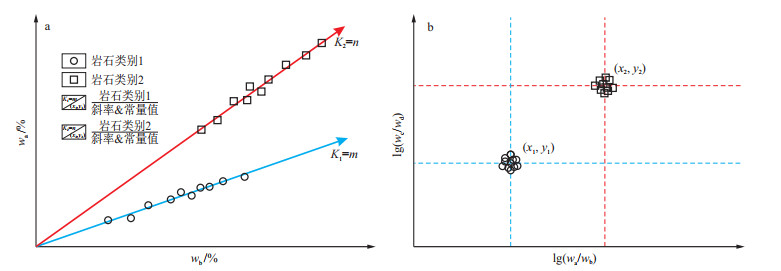
 下载:
下载:

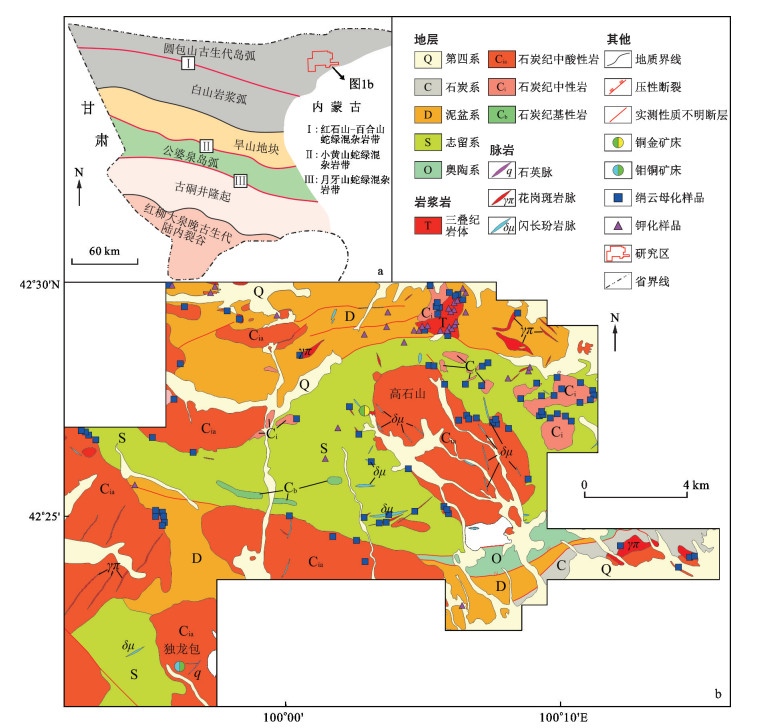
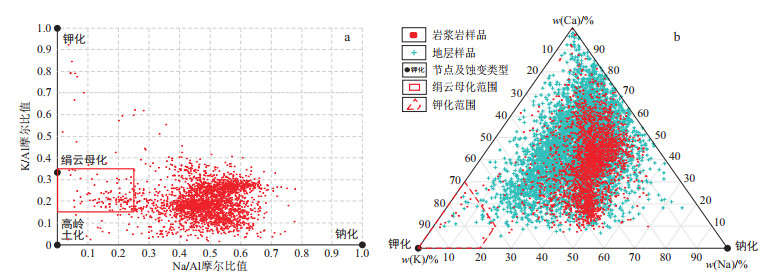
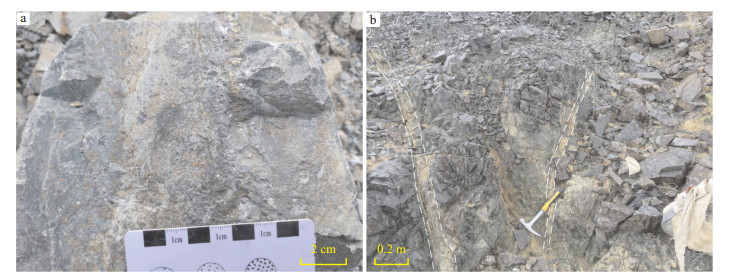
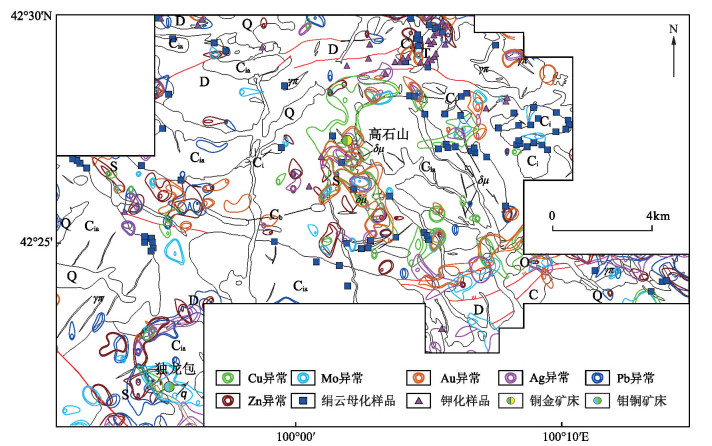
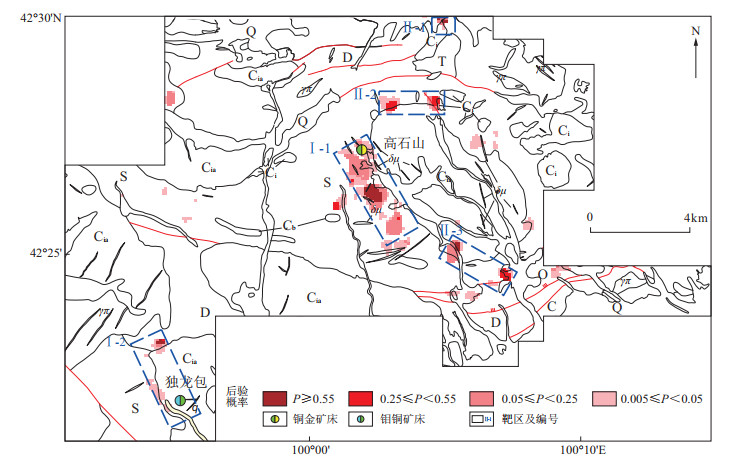
 百度学术
百度学术


